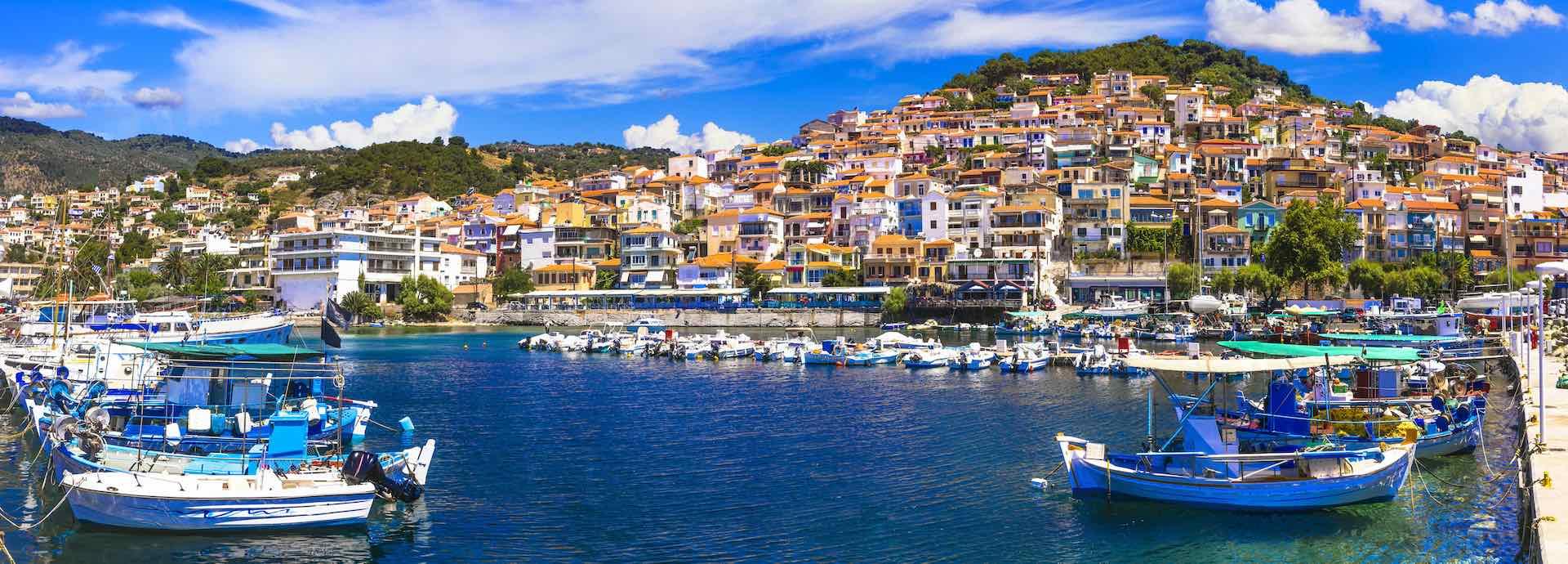

As the European Union pushes its member states towards cleaner energy, Greece is investigating ways to reach 100% decarbonisation across hundreds of inhabited islands. Wärtsilä’s power system modelling is helping the country plan the transition.
Last year Kyriakos Mitsotakis, Greece’s new prime minister, announced his support for the ambitious environmental targets set by the European Union (EU) and vowed to overhaul his nation’s dependence on fossil fuels by investing in a greener future. Achieving 100% decarbonisation can lead to cumulative savings of EUR 25 million and a reduction of 1.8 million tonnes of CO2 over the course of a decade. His plan includes shutting down all 14 of Greece’s lignite-fired power stations by 2028 and using renewable energy sources for electricity generation instead.
Central to Mitsotakis’ plan is the country’s roughly 6,000 islands, of which 227 are inhabited. To meet its decarbonisation target, Greece will have to establish a connection between non-interconnected islands and the mainland transmission system to use its strong, renewable energy potential. It is important, however, to factor in the country-wide variations in energy demand when doing so.
“There is a big difference if you speak about the Greek mainland or the Greek islands, especially when it comes to both infrastructure and power needs,” says Tord Johnsson, General Manager Strategy and Growth Projects, Europe & Africa, at Wärtsilä Energy.
Greece’s energy needs differ greatly, primarily due to seasonal changes. During summer, the nation of 10.7 million people nearly triples in population as tourists flock to the diverse islands of the country.
“There are big demand fluctuations, from low demand winter weeks to high demand summer weeks,” Johnsson says. “This is challenging to manage.”
Power system modelling can help tide over such uncertainties by designing an optimal solution, whereby the demand of each hour of every year is met in the most cost-efficient manner.

PLEXOS power system modelling
In an effort to help Greek islands reach the prime minister’s decarbonisation goals, Wärtsilä is using PLEXOS power system modelling on Greece’s third largest island, Lesvos.
The modelling has shown that 100% decarbonisation on the island is possible as early as 2025.
“Lesvos island is a typical Greek island in regard to its power profile today,” Johnsson says.
With an installed capacity of 120 MW and about 20% renewable installed capacity, 14% of power generation comes from renewables and the rest from thermal generation.
PLEXOS power system modelling shows five different scenarios, explaining what happens when nothing changes to what happens when optimal changes are made.
- Business continues to operate as normal: After 2024, light fuel oil (LFO) replaces heavy fuel oil (HFO) while maintaining the existing installed capacity on the island. There are no new builds, and nothing is retired.
- Free optimisation: After 2024, LFO replaces HFO and PLEXOS is free to optimise the system without constraint.
- 100% renewable energy sources: After 2024, LFO replaces HFO. Then, each year until 2030, the proportion of renewable energy sources used for electricity generation is increased, thereby reaching the 100% renewable energy target.
- 100% decarbonisation: After 2024, biodiesel replaces HFO and LFO. Fuel conversion for existing engines and open-cycle gas turbines on the island amounts to half of the new-build costs.
- 100% renewable energy is achieved with Power-to-Fuel:
After 2024, synthetic fuel becomes the only fuel available and islands should build Power-to-Fuel converters that produce the synthetic fuels.
“The PLEXOS model chooses an amount of energy storage capacity, there should be on the island,” Johnsson says. “In the 100% decarbonised scenario, the model found there is a new capacity of 198 MW of wind, 135 MW of solar, 50 MW of short-term batteries and 39 MW for an eight-hour battery.”
According to Johnsson, if islands invest 1.2 times higher than in the optimal case, the fuel switch can happen by 2024 and the islands will reach 100% decarbonisation sooner than even the most ambitious EU targets.
However, the model also demonstrates limitations that when relying only on the intermittent renewable energy sources of wind, solar and capacity provided by batteries will help islands achieve only 80% decarbonisation.
In addition, there are other issues, including geographical constraints. Using wind turbines to generate 100% of power for islands is not only expensive, but most don’t have the space. Moreover, many people perceive wind turbines to be obstructions to the natural beauty of the islands.
Since transforming Greece’s touristic hotspots into wind turbine farms is far from ideal, compromise is necessary, particularly on days when there isn’t wind or sun to create power. Instead, battery storage systems and thermal capacity fill the gap.
Future of renewable energy on islands
The outcomes and insights from the Lesvos modelling are applicable globally for other island systems, according to Johnsson. Earlier this year, Wärtsilä signed a contract to help the United States Virgin Islands reach a similarly based solution.
“When we look at islands, what we normally offer as a solution to the client is that we upgrade the automation system of the existing thermal generator and, if needed, some of the hardware of the engines for the thermal systems”, Johnsson says. “Then, we provide full energy storage system (ESS) – size pending on the modelling – and battery capacity is extended as increased renewable penetration comes to the island. The third component of our solution is to install the Wärtsilä GEMS (Energy Management System) technology, which will then help support the total generating assets on the island to maximise the renewable energy sources and battery operation. It also minimises the power generation, and thus fuel savings, while reducing carbon footprint.”
The Greek islands seem to be on the road to decarbonisation. The next few years will determine what other islands can learn from Greece’s experience.
Did you like this? Subscribe to Insights updates!
Once every six weeks, you will get the top picks – the latest and the greatest pieces – from this Insights channel by email.


